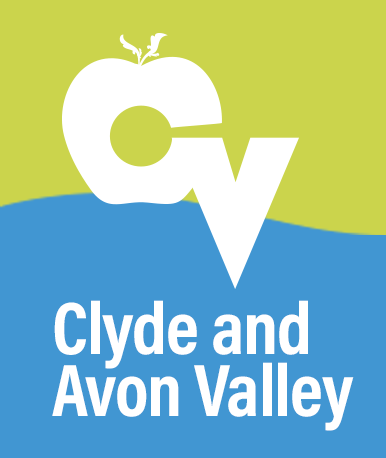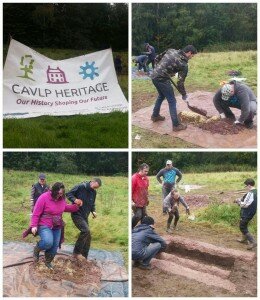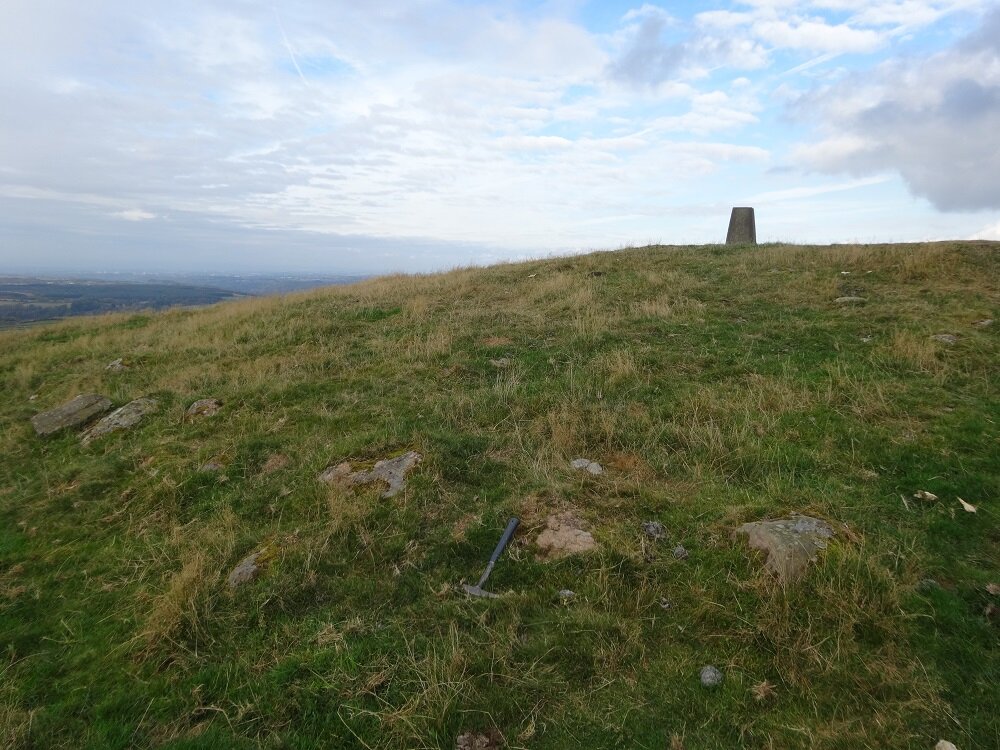Making a Medieval Tile
Celebrating the Brick and Tile Industry of the Clyde and Avon Valley
Karen McCusker, CAVLP Heritage Project Officer, January 2017
In order to celebrate the rich tile and brick industry in the Clyde and Avon Valley, CAVLP Heritage created a series of medieval inlaid tiles. As a culmination of this activity, they built and fired a tile kiln in October of 2016.
From May to July 2016, several events were held in various sites around the Clyde and Avon Valley where local children were able to try their hand at creating their own Medieval Tile. The children were able to choose from three pre-made stamp designs or were able to carve their own design into the clay. These designs were then filled with a differently coloured clay so that when the tile was cleaned and baked, the tile would be red with a white image on its face.

Over the course of the spring and summer, we managed to collect over 60 clay tiles, which were dried and kept until the kiln was built and ready to fire.
From late September to mid-October, CAVLP Heritage volunteers came together to help build a tile kiln. A kiln is a type of large oven that is designed to reach very high temperatures of at least 800 degrees Celsius. We were aiming to get ours to reach a temperature of around 1000 degrees Celsius. The kiln was built of cob, which is a material made of sand, clay and organic material like straw. This material is strong and can withstand quite high heats - provided it has dried properly prior to lighting. Thanks to Raeburn Brick Ltd who donated the 4 tonnes of clay we needed to build the small kiln, we were able to complete the kiln in roughly 2 weeks. This kiln was an experimental structure, and we were all keen to find out just how well it would work.
On October 15th, 2016, the kiln was lit. Before lighting, it was filled with the tiles and a handful of other clay pieces. The open box of the kiln was capped with clay roofing tiles, and the gaps were closed with pieces of sod in order to better insulate the structure. Using wood that was collected from around Chatelherault Country Park, our volunteers lit the kiln and proceeded to keep it stoked over the course of the next 12 hours.
Meanwhile, a lamb was roasted on the spit, and visitors to the evening were able to see demonstrations of woodworking and metalworking, taste some freshly cooked lamb and enjoy some local singers as the volunteers worked tirelessly to gradually raise the temperature of the kiln.
After allowing the kiln to cool overnight, we were able to open the structure and remove the surviving tiles. At some point during the burn, many of the tiles unfortunately shattered. This is likely due to raising the temperature too quickly initially or air bubbles within the tiles expanding due to the heat. When we opened the kiln up, we were greeted to a collection of shards of tile. However, the temperature of the kiln was raised high enough to change the tiles from clay into pottery. 3 of the over 60 tiles survived. Watch the video below to see how the weekend went!
If you would like to try your hand at creating a tile of your own, please refer to the Making a Medieval Tile Guide PDF on the right included as a part of the museum exhibit!
This museum item was created by CAVLP Heritage Project Assistant, Karen McCusker, as part of the ‘Capturing the Past’ project, recording the working lives of people in the Clyde valley over the centuries. The project was managed by Northlight Heritage and supported by Historic Environment Scotland and Heritage Lottery Fund supported Clyde and Avon Valley Landscape Project.

























